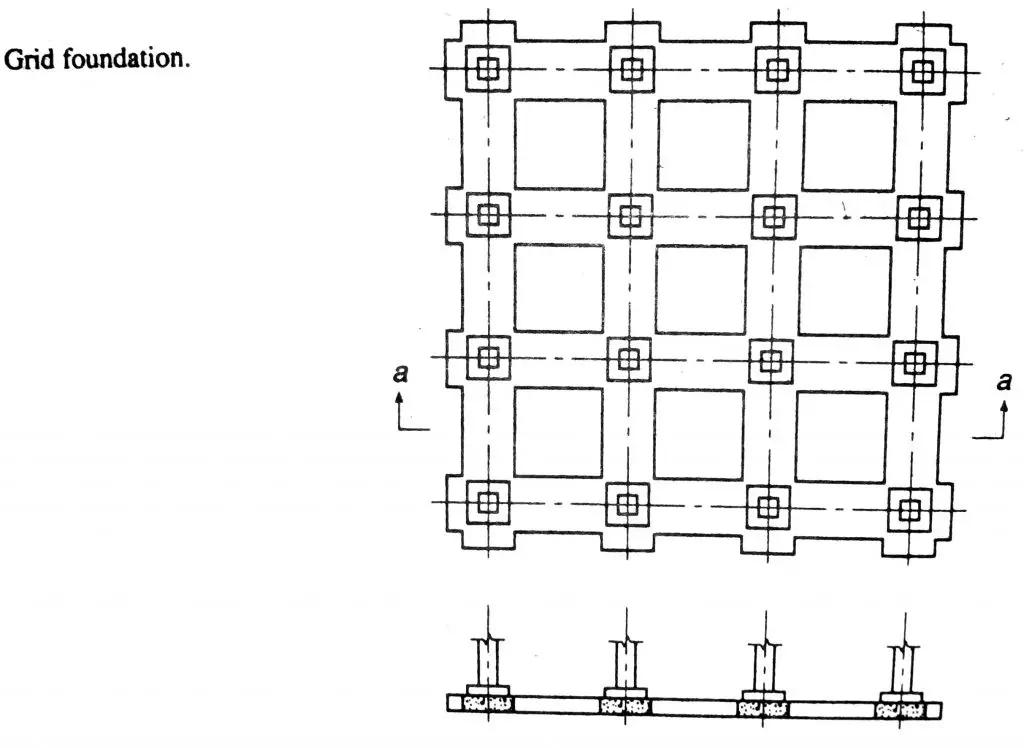Combined Footings
Spread footings that support more than one column or wall are known as combined footing. They can be divided into two categories: those that support two columns and those that support more than two columns.
Combined Footings – Two Column
Two-column combined footings are seen become necessary in 2 situations:
- If columns are so close to the property line that single- column footing can not be made without projecting beyond that line;
- If some adjacent columns are so close to each other that their footing would merge.
Strip Footings – More Than Two Columns
When the bearing capacity of the subsoil is low so that large bearing areas become necessary, individual footings are replaced by continuous strip footing that supports more than two columns in a row. Sometimes such strips are arranged in both directions, in which case a grid foundation is obtained, as shown in Fig. 1. Strip footing can be made to develop a much larger bearing area much more economically than can be done by using footing because the individual strips represent continuous beams whose moments are much smaller than the cantilever moments in large single footing that project far out from the column in all four directions.

Mat Foundations
In many cases, the strips are made to marge, resulting in a mat foundation, as shown in Fig. 2. That is, the foundation consists of a solid reinforced concrete slab under the entire building. In structural action, such a mat is very similar to a flat slab or a flat plate, upside down, i. e., loaded upward by the bearing pressure and downward by the concentrated column reaction. The mat foundation evidently develops the maximum available bearing area under the building. If the soil capacity is too low that even this large bearing is insufficient, deep foundations such as piles or caissons must be used.
Mat foundation may be designed with the column pedestals, as shown in Fig. 1 and 2, or without them, depending on whether or not they are necessary for share strength and the development length of dowels.
Apart from developing large bearing areas, another advantage of strip and mat foundation is that their continuity and rigidity help in reducing differential settlements of the individual column relative to each other, which may otherwise be caused by local variation in the quality of subsoil, other causes.
